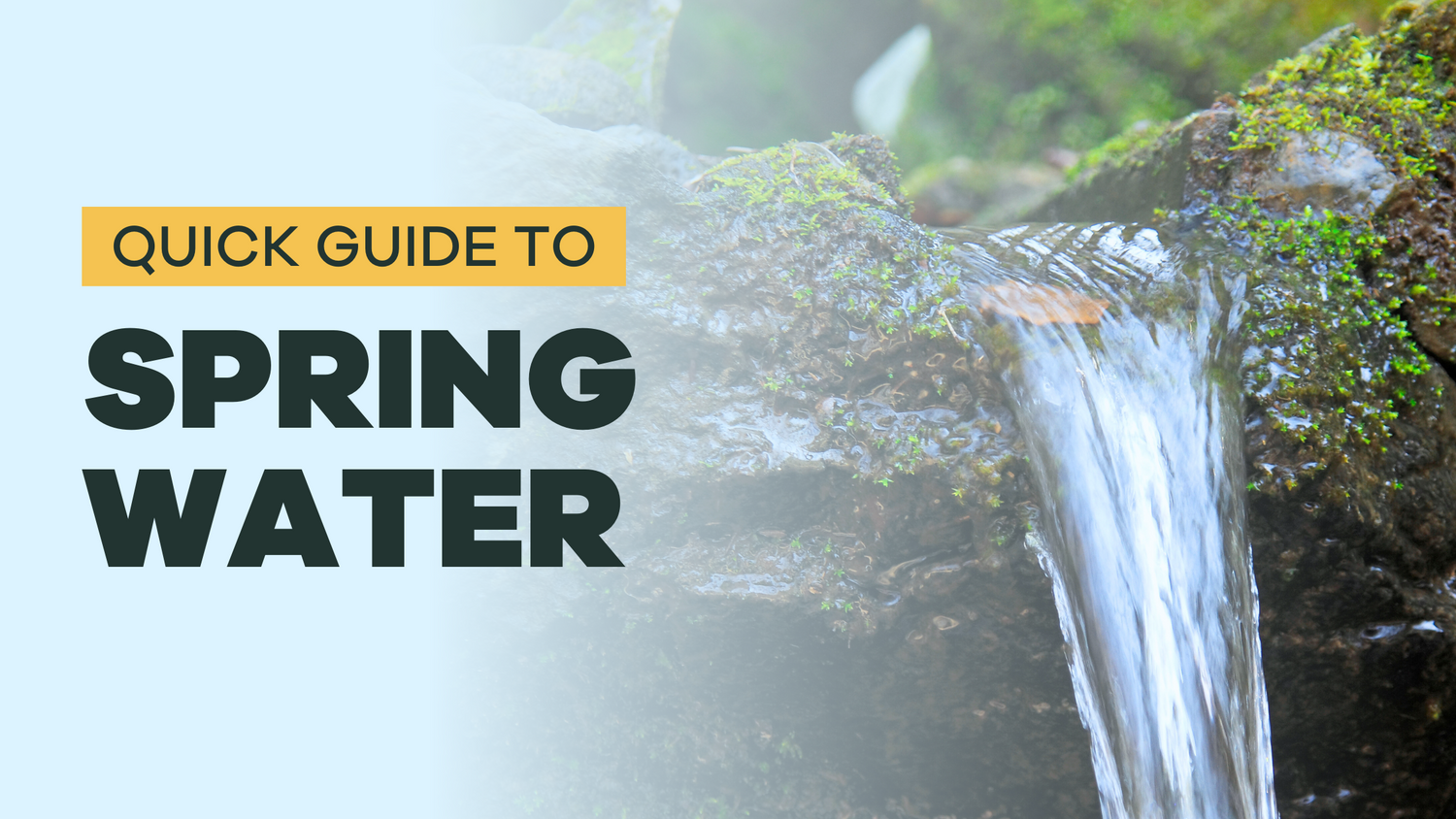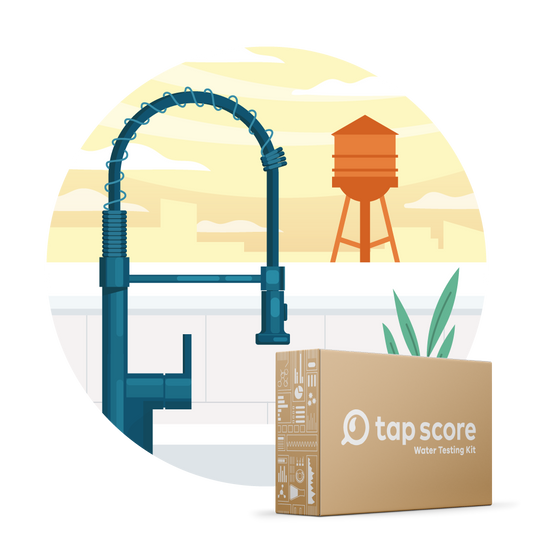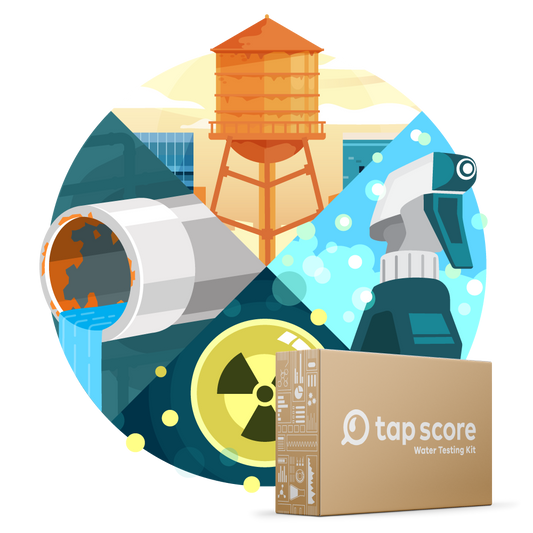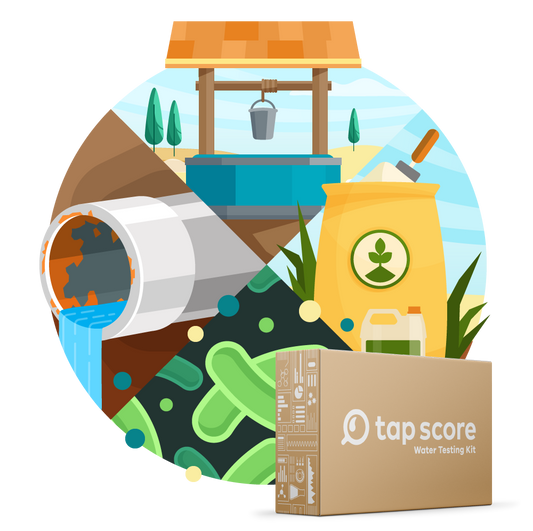
Quick Guide to Spring Water
Our blog is written by real experts— not AI. Each guide is carefully reviewed and updated based on the latest research. Plus, with no affiliate links, you can count on unbiased insights you can trust.
It’s very common to assume not only is natural spring water safe to drink, it's purer than purified water. But natural doesn’t always mean safe. Even natural springs can be contaminated with bacteria, parasites, heavy metals, or other harmful substances—many of which are not visible to the naked eye.
This quick guide shows you why testing your spring water is essential.
Table of Contents:
- What Is Spring Water
- Is Spring Water Safe to Drink?
- Testing Spring Water
- Spring Water Filtration and Treatment
- What’s the Takeaway?
What Is Spring Water and Where Does it Come From?
Spring water is groundwater that naturally flows to the surface. Many people consider natural spring water to be pure because it comes from underground sources, but that’s not always the case. Water from underground sources can still encounter contamination. In fact, spring water is especially susceptible to contamination as it tends to remain close to the surface.
Spring water is also a specific category of bottled water defined by the FDA as “water derived from an underground formation from which water flows naturally to the surface of the earth.”[1]
Spring Water v Purified Water
Spring water hasn't undergone any filtration or treatment. Purified water is water that has undergone filtration and/or treatment to remove impurities. Treatment processes include reverse osmosis technology, activated filtration, distillation and more.
Is Spring Water Well Water?
Spring water and well water are similar in that they are both groundwater—spring water reaches the surface naturally whereas well water is pumped to the surface. Contamination concerns for well water and spring water are very similar, and testing priorities are the same.
How Do I Test My Well Water in a Lab?
Is Spring Water Safe to Drink?
Not always. Depending on its location, the environmental pollutants spring water is susceptible to include:
- Bacteria like E. coli and other microbial parasites including Giardia
- Heavy metals like arsenic, uranium, manganese, etc.
- Pesticides, nitrates, PFAS, petroleum compounds, and other chemical contaminants from industrial or agricultural runoff
Whether or not collected spring water is safe to drink depends on a few factors:
- The spring’s proximity to human activity (e.g., industrial sites, dumps, or agricultural sites) or other animal activity
- If and for how long the spring water flowed at the surface
- The natural metal and mineral makeup of the groundwater source
- Seasonal changes like rainfall and snowmelt

What Are the Dangers of Drinking Spring Water?
The primary danger of drinking spring water is acute illness from bacterial contamination. Animal waste or human activity can introduce bacteria, viruses, or parasites like Giardia into clear flowing spring water. Sampling campaigns of springs across Pennsylvania and Minnesota found that the majority of springs were contaminated with coliform bacteria and/or E. coli.[2,3]
Spring water is more likely to encounter pollutants if it reaches the surface at any point in its journey, and the risk increases the farther it flows along the surface.
Furthermore, industrial and agricultural contaminants from nearby activity can be a health risk if the spring is in the proximity of industrial, agriculture or other waste sites. Potential contaminants can include pesticides, fertilizers, nitrates, petroleum compounds, pharmaceuticals and personal care products, and PFAS compounds.[2]
What About Collecting from a Natural Spring on Your Property?
If you collect raw spring water as a regular source of drinking water, then you want to beware of contaminants that may be hazardous if consumed over the long-term. The ground the spring water passes through can naturally contain high levels of contaminants like arsenic, cadmium, manganese, and uranium which can all be toxic if ingested regularly at elevated levels.
Depending on the land uses in the area around your spring’s recharge area (i.e., the area of the ground where water seeps in), the water may be contaminated with microorganisms or various industrial and agricultural contaminants.
Even though the spring itself is located on your property, the recharge area that feeds the spring may not be. You can help protect the water quality of the spring by restricting land uses in and around the recharge area, but this may not be possible if you are not sure where the recharge area is or if it is not on your property.
How Can You Tell if Spring Water Is Safe to Drink?
The best way to tell if spring water is safe to drink is to test it. While some forms of contamination present themselves visually or through odors, many contaminants that cause illness cannot be seen, smelled, or tasted.

Test Your Spring Water Before You Drink It
If you intend to consume spring water regularly, testing it first—and regularly—will help minimize the chance of illness and ensure your water is safe for consumption.
Tap Score’s Spring Water Test Kits offer certified laboratory testing for contaminants commonly found in springs, creeks, and rivers.
The Essential Spring Water Test kit includes detailed analysis of common spring water concerns. These include issues related to natural water chemistry as well as contaminants such as heavy metals, nitrate, and bacteria.
The Advanced Spring Water Test kit includes overnight return shipping—with ice packs—to help preserve and stabilize your sample for a more robust picture of microbiological activity.
We recommend adding the Pesticides Water Test kit if pesticides are a concern in the area around your spring.
You can also opt for the Advanced Well Water Test if you’re not sure what to test. This well testing kit takes the guessing out of the search for a representative portrait of untreated spring and well water quality.
Why Does Laboratory Testing Matter?
Laboratory drinking water analysis is better than DIY testing for spring water you intend to drink because it provides more precise and reliable results.
DIY kits (like test strips and color disk kits) usually only show general presence/absence of contaminants, or are quite difficult to follow for color-grade measurement. They’re useful for basic elements like pH, hardness, or presence/absence of bacteria.
Laboratories use advanced equipment handled by trained personnel to detect contaminants at lower concentrations and with care & precision.
What's the Difference Between Lab Tests and Test Strips?
When Is a Lab Test the Right Test?
A laboratory water test is the right test if you drink spring water regularly. Investing in a mail-to-lab test kit is the best way to determine if your water is safe to drink.
Additionally, a laboratory water test is right anytime you have concerns about pollution, fecal contamination, agricultural runoff, or after any natural event like a wildfire, landslide that may impact natural water sources. Always test your water when you notice a change in taste, odor, or color.
Spring Water Filtration and Treatment
Treating spring water depends on what issues are lurking in your specific sample of water. Common spring water issues that warrant treatment include:
- Bacteria and other microorganisms
- Troublesome pH, TDS, or turbidity levels
- High heavy metal concentrations
- High nitrate concentrations
Recommended Spring Water Treatment Methods
The best treatment method for spring water depends on the contaminants present. The following is a list of some potential treatment methods for common issues:
- Bacteria and other microorganisms: Disinfection, such as chlorination or UV
- Non-optimal pH: pH adjustment using acid, soda ash/sodium hydroxide or neutralizing filters depending on the direction of change needed
- High TDS: Reverse osmosis
- High turbidity: Mechanical filtration
- High heavy metal concentrations: Various, including ion exchange, reverse osmosis, oxidation and filtration (depends on the metal)
- High nitrate: Anion exchange, reverse osmosis
- Organic chemicals: Activated carbon filter
What’s the Takeaway?
- Spring water is groundwater that naturally flows to the surface
- Spring water is susceptible to environmental pollutants just like any other untreated water source. These include: bacteria, heavy metals (like arsenic, uranium, manganese, etc.), and nitrates
- The best way to tell if spring water is safe to drink is to test it. Tap Score recommends the Advanced Spring Water test kit and the Advanced Well Water test kit for comprehensive and reliable peace of mind
- The best water filter for spring water depends on the contaminants present but include various common household-scale technologies
- Organic chemical contaminants, like pesticides and herbicides









